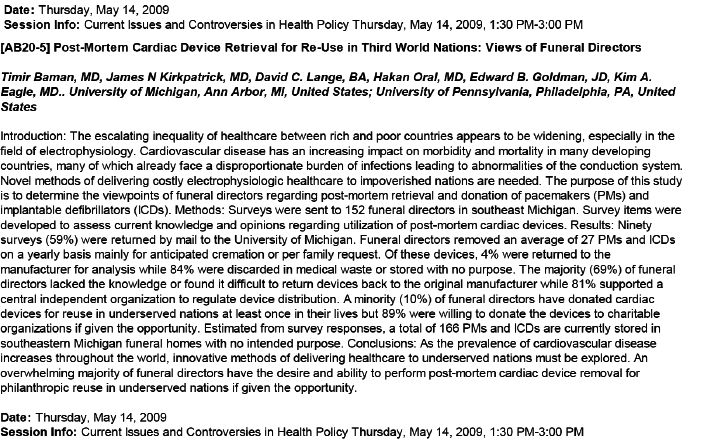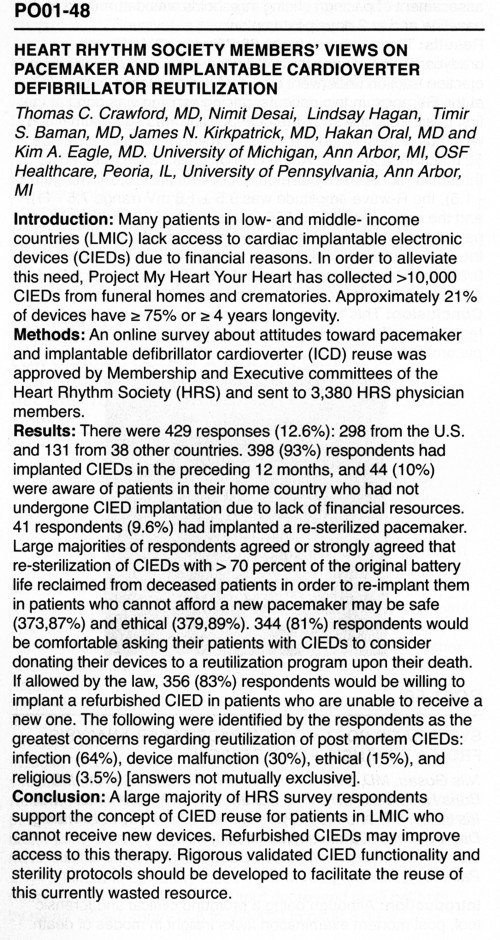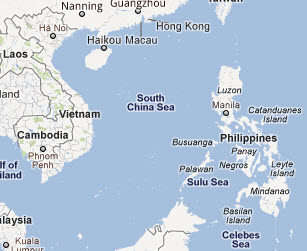

 |
|
|
Recycling pacemakers, defibrillatorsUpdate May 2013. HRS survey. In 1997, Northwest
Signal Processing, Inc., initiated a project with the Funeral Homes
Association of Oregon to
recycle
pacemakers and other similar cardiac devices, namely defibrillators, to
help poor patients in Vietnam.
During the period from 1997 through July 2011, we received 1253 devices. Of these, we were able to ship back to Vietnam 564 devices that still have useful remaining service lives. During the period from 1997 till about 2001, the majority of pacemakers implanted in Vietnam were these recycled pacemakers that we provided free of charge to poor patients through the implanting hospitals. During this period 308 pacemakers were received and we were able to send to Vietnam 121 devices. The vast majority of these devices were implanted in hospitals south of Hue. For obscure reasons, the culture north of Hue precluded the use of recycled pacemakers. It has more to do with bureaucratic inflexibility that any real medical issue. With the improved economic situation of Vietnam, the need for pacemakers has decreased in the large urban areas. However as more implant hospitals come on line, they are serving a poorer population in the countryside. Thus there has been recently an increased need for these recycled devices. Also, there is a need for the more advanced devices such as defibrillators (much thicker devices than the pacemakers) and triple chamber devices, both pacemaker and defibrillators, for patients with heart failure. These latter devices are still considerably expensive for the general Vietnamese population. Also due a higher incidence of Brugada syndrome, there is a constant demand for defibrillators that we have unfortunately not been able to meet. This is a disease that is found with a higher incidence rate in Southeast Asia. It strikes typically middle aged males apparently healthy during rest and typically during sleep. Typically it is only after an episode of syncope that the patient will find out from an EKG taken at the hospital that he has the Brugada syndrome. In families with close relatives (father, brother) who have died unexpectedly young, the diagnostic strikes real fear in the patient. We also need the triple chamber devices for our training and humanitarian projects. The most recent one , our fourth, was in Hue in July 2011. Cardiologists need more training before they can be comfortable implanting these advanced devices. And in the inital stage, patients with heart failure will need a recycled device since they cannot afford a new one. Thus we would like to appeal to funeral homes for their continued support for this humanitarian project to help a fellow human being, and also to reduce adding more "junk" to our landfills. Our slogan is "give a pacemaker a second life!". You will need to remove these devices anyway from patients who are to be cremated (take a look at an incinerated defibrillator), due to the danger of device exploding when subject to high temperatures. There is no need to remove the leads. You can cut them short leaving a stub of about 2-3 inches. Disinfect them in your usual bath of disinfectant. Instead of throwing it in a drawer or putting it in the thrash, put it in a plastic bag, and mail it to us at Attn: Dr Tran Thong
Northwest Signal Processing, Inc 8780 SW Pacer Dr Beaverton OR 97008 e-mail: nwspi@comcast.net You can just mail the package by regular US post on a weekly basis. Don't be alarmed if the defibrillators (the thicker bigger devices) put out alarms daily, typically in the morning or evening. The alarm is caused by the fact that the device has been removed from the body and the leads cut. When we receive the devices, we will further clean and disinfect/resterilize and bag them. Those devices that pass an initial electrical test, will be hand carried back to Vietnam, where they will be checked with a programmer from the manufacturer. Finally those that pass this final test will be resterilized with ethylene-oxide and made available to poor patients. |




Visitor number:
Updated: 05/22/2013
Copyright NWSPI 2011-2013